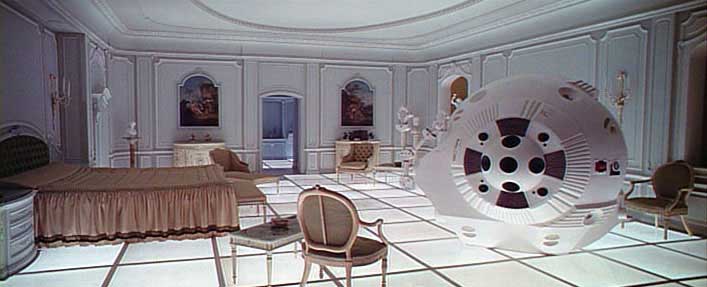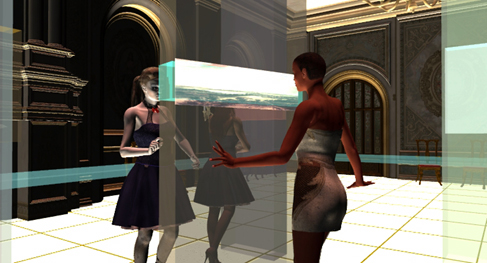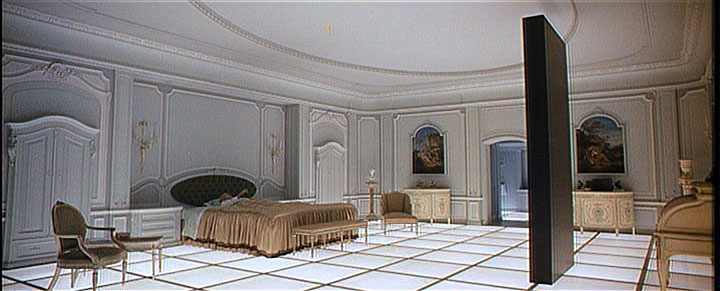

by Kal Ng - www.arch.hku.hk - www.kgelab.net
Spatial Narrative
Architectural representation in moving images should develop beyond the usual stratum of digital representation of space in dry and matter of fact manner, because architectural perception entails more than the putting together of measured stone and steel. Cinema, in its plethora of subject matters and techniques, is a fluid and plastic medium by which space can be perceived in lively, agitated manner with rich dimensions encompassing the underlying influences of the arts, the humanities, and all the affects that come with the civilized experience.
In my research, in an attempt to break free from the architectural thinking that's been handed down through disciplinary training, a rethinking of the synergy between cinema and architecture is at work in order to bring in new vitality in architectural perception, moving beyond dressing up boring building with pretty imagery; develop a new representational language to humanize the sterile surface of the digital realm; and be informed by a wider spectrum of practices in generating new ideas in architecture, hopefully. Such as drawing from the powerful narratology of the cinematic form to develop spatial narratives for spatial descriptions.
A spectrum of cinematic practices has been studied under the framework of the important theorists of cinema: Andre Bazin and Gilles Deleuze, in order to find out a plausible way to represent space in various possibilities in spatial narrative forms and the logic of such undertaking measured and informed by a Deleuzian typology of images.
A spatial narrative for an animation is specially developed to illustrate the hyper social space cinematically, imparting the viewer to take on the point of view of an alien sphere, to re-examine the possibilities of physical human interactions and experimentation in the networked age.

The image of David Bowman's room in the film 2001 A Space Odyssey had inspired the project of Ballroom One, an attempt to develop a spatial narrative out of this unique juxtaposition of not only architectural spaces but ideas, and render them cinematically to make comprehensible the possibilities of a hyper social space. Just like David Bowman had reached out to the stars to get in touch with the otherworldly intelligence, this time around the earth bound encounter examines a different aspect of human potential.
Architectural Objective - The Hyper Social
Our social space today has been transformed by the network and the grid, the grid has been a powerful architectural element in the modern era. Now the grid takes on an even more powerful symbolic form, as in the governing matrix of the machine in The Matrix films. The grid is a symbol of the network, the rationality of modernist space and ground base for the virtual cyberspace.

When Stanley Kubrick used the grid in the setting of his space odyssey, he had juxtaposed the classical hierarchical spatial principal with the non-hierarchical, web like structure of the grid, which is a totally new paradigm with spatial and social implications. Without hierarchy, the grid follows its own logic, the logic of the machine, which functions with numbers and coordinates. Spatially it has an implication of relating the small neutral space of a square with the infinite space that extends to the horizon, a Cartisian definition of space. All the parts have no hierarchy toward each other but together serve the whole. This is in a way a machine aesthetic, the logic that each part has a function that serve a whole, and the whole has a specific goal, part of it is to maintain the survival and continuation of the network. Yet human society had been established with hierarchy, individuals must agree on a social norm and order in exchange for the survival and identity of the self.
The grid democratizes and yet governs the parts to serve a goal. The grid, by defining a space, always has a purpose and a function. The human social animal, living in the age of the networked grid, is free to roam and mingle with other socially in the cyberspace, an imaginery manifestation of the grid like network structure, and yet also subservient to the necessities of the paradigm in order to participate. As in Rem Koolhaas' notion of the Generic City, a form of urban space left over when the majority of the population enters and engages in cyberspace, our mingling with others are increasingly mediated by images and technologies, the physicality of communicating face to face takes on more effort and drama in today rigidly defined sites of engagement: the bar, the restaurant, the mall etc, with less and less "free" space for the loitering public. In a way the urban space of today, whether it is the city grid or the grid of the cyberspace, impose another form of rigidity to social engagement, our social initiation is modulated and mediated by technology. It is therefore a need to "hype" up the existing physical space as a way to creat a dramatic, hyper arena for social engagement and possibilities.
Cinematic Objective - Ballroom ONE
Ballroom One is a restart and reboot of the initial social structure but trangress its symbolic meaning to create a spatiality that truely "works" with networked and virtual spaces.
Apart from the existing function of a dance and social function hall, the ballroom is equiped with structure for mediated images of the same space and the networked space outside, so that people will no need to go elsewhere if they feel the need to enter the net again, yet the more important "hyper" element is the mediated image of the same ballroom space and of the participants themselves on holographic screens, so that people are constantly or randomly seeing each other and themselves in their own images and the real physical other. Still following the important ditum of the ballroom: a place to see and be seen, the mediated imagery can be programmed to emitt images of self and others dictated by participants behavior, number or other conditions. Thus the awareness of others and self is heightened with infinite reflectivity and narcissistic potentials.

The formality of the ballroom is also subverted by the changing configuration of the bar slabs and the screen slabs, the rigidity of the shell and its implied social structuralism is contrasted with the fluidity of the modulated screens and changing shapes and form of the slabs. The slabs with holographic screens become a cognitive modulator, heightening self awareness, self consciousness and the visuality of others, the strict function of the ballroom space dissolves with merging function of gallery, bar, installation space, performance space, dance hall, cyber cafe, game hall and spaces that encourage hyper social activities.
Precedent
The Ballroom is a primary site of social engagement and social initiation for a sector of society. The formality of the architectural space almost commands a formality in dress code and behaviour. The social dance, apart from a process of socialization, is also a rigid symbolic ritual in communicating class status, gossips and relevant information for interested parties.
The Neo-Classical space is symbolic of the social structure of a society set up for many centuries. It is precisely this backdrop of a space of classical convention that makes the watching of the film 2001 A Space Odyssey so striking a cinematic spatial experience.

Towards the end of astronaut David Bowman's journey, he was invited by the alien species to live out the rest of his life in a place constructed from information derived from his mind. Yet the way his room is set up and lighted is a masterstroke of cinematic mise en scene that it makes for lasting impression, as if the ground lit room has a story all on its own. There is of course no explanation why it is that way, the setting fully allows the imagination of director Stanley Kubrick and the viewers to implicate its meaning, and created a potentially rich spatial narrative simply by juxtaposition of a classical space with the grid like, white washed, sanitized modernist lighting. The immediate meaning cannot be ignored, that any notion of the future and of technology cannot be meaningful without the juxtaposition of a historicity as backdrop. When projecting an image of the future, the film constantly remind us where we have come from. And in this scene, where David Bowman came from too.